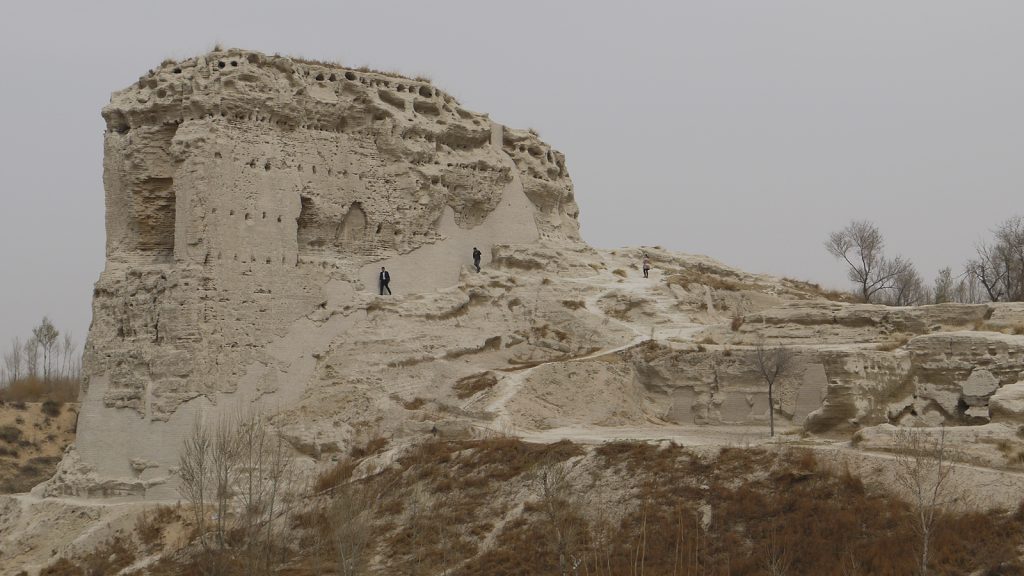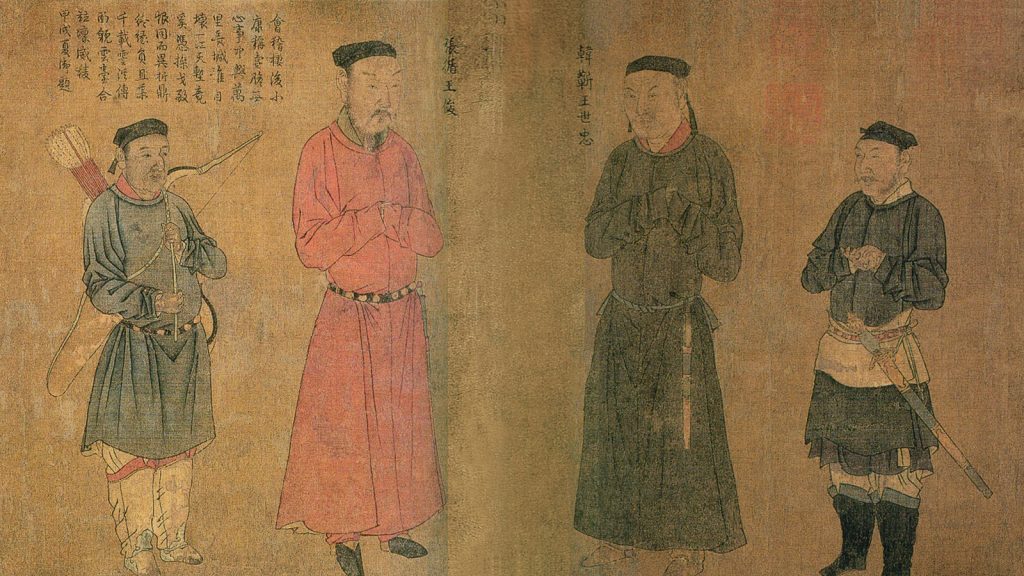

Latest posts View all
- Virtuous Governance: Popular Notions of Noblesse Oblige in Medieval JapanThomas Booth The late thirteenth century was a period of acute vulnerability for the Kamakura shogunate. The preceding century was commonly known as ‘the century… Read more: Virtuous Governance: Popular Notions of Noblesse Oblige in Medieval Japan
Resources
Benevolent Elites? Shared Rulership and Privileges in Early Medieval Japan
Mickey Adolphson
In considering aspects of the “public good” or noblesse oblige in early medieval Japan (ca. 1100-1400), I am faced with several challenges. To a large extent, it depends on how one understands Japan’s socio-political structures and the underlying ideologies. On the one hand, there is the issue of rulership, which is far more complex than many assume. In brief, one can say that ancient and especially medieval Japan was organized around principles of inclusion rather than exclusion, meaning that several different levels of society are connected to the ruling elites through strong, and in some ways, co-dependent hierarchical ties. Thus, when new powers emerge or when the power balance is shifted, rather than resulting in a turnover of power or the establishment of a new ruling dynasty, we find that new powers or elites are simply integrated into a slightly adjusted rulership that maintains the general framework of previous eras. On the other hand, it is difficult to pinpoint who exactly ruled Japan during early medieval times. The emperor was rarely in power although he remained the most important symbol and source of legitimacy, and in practice, the privileges and responsibilities of rulership was shared between three elite blocs: the nobility, the religious establishments, and the warrior-aristocracy. This begs the question then if these elites had a common sense of “public good” or whether they were entrusted with different responsibilities in their respective spheres of control.
Ideas of Good Government in Thirteenth Century China as Reflected in Local Official’s Handbook
Sukhee Lee
My paper explores ideas of good government in thirteenth century China as reflected in a handbook written for local officials: Zhoulian xulun (Discourses on Pulling Down the Screen During the Daytime (hereafter Discourses) by Hu Taichu (1203 – 1268). The core of Discourses was based on experiences of a man who was neither a moral philosopher nor a profound classical scholar, but of someone who spent his late official career in lower positions in local administration. Not a work of schematic design deducted from one’s ideological commitment, Discourses is an aggregate of practical expertise often painfully acquired through one’s firsthand experience, either triumphant or frustrating. By analyzing its sections on “Controlling Clerks”, “Financial Administration”, “Famine Relief”, and “Dealing with Influential Local People” among others, I will argue that a consistent emphasis on effective governance that capitalizes on private desires and commercial economy is a characteristic of Discourses as a work of political thought. It is also what makes it distinct from two other contemporary handbooks: Zuoyi zizhen (Self-Admonitions for the Magistrate) and Zhouxian tigang (Basic Outlines for Prefectures and Counties). This is also where we can see how the lowest level government in thirteenth century China was devising its own “countermeasures” to cope with people’s countermeasures to state policies. Discourses’ suggestions that the magistrate would make use of commercial activities of county residents as well as traveling merchants, would have sounded too precocious to many contemporary local officials in the rest of the world, but they were realistic advice in the economic context of the Southern Song. The Song (960 – 1279), especially the Southern Song (1127 – 1279), was a period of rapid commercial and urban expansion, to be unsurpassed in later Chinese history, which was undergirded by agricultural innovation, famously known as the “medieval economic revolution”.
Who Were the Power Brokers in the Medieval Ordos, and Where Were They Located?
Ruth Mostern
The Ordos Plateau, located within the great bend of the Yellow River at the edge of the East Asian Monsoon system, is an ecological transition region with unpredictable rainfall and a climate that ranges from sub-humid in the south to arid sand desert some five hundred kilometres to the north. During the medieval period, it was also a zone of conflict and contention. Situated at the far periphery of control for all of the political entities that sought to control it, it was nevertheless a strategic region for horse breeding and for salt and timber production, and a route of transit between the Silk Road trade routes of Central Asia and the dense agrarian society of China proper. Peoples from language groups including Turkic, Mongol, Tangut, Tibetan and Chinese occupied the Ordos in manners that varied according to the rainfall, practicing a range of modes of subsistence that along the agrarian and pastoral continuum. Power holders included chieftains, Chinese military and civil officials, Buddhist monastics, and merchants. This presentation is an initial effort to describe the political ecology of the medieval Ordos within the framework of spatial and environmental analysis.
The Spatial Organization of Elite Benevolence in Medieval China (But Not Only There)
Ruth Mostern
In medieval China (as is perhaps universally the case across time, place, and form of social and political structure), political and social authority is spatially delimited. Expectations about which individuals ought to use their authority for the betterment of some group of people are also geographically constrained. Authority, situated in some place, wanes outside of that locale. The people toward whom socially and politically powerful people may feel responsible are also situated somewhere. Moreover, within a given locale, not all individuals may be deemed equally worthy of benevolence. Colonized or minoritized people may be expropriated, slaughtered, or coerced into giving up some aspect of their culture even as settlers in the same location may fall under the protection of an elite guardian. Politics of care toward the environment and non-human animals varied spatially and socially as well. Additionally, material objects, people and other animals, and ideas – the currency of exchange within networks of differential power – circulated more easily in some places than others. Routes of transportation and personal connection facilitated some kinds of exchange; challenges of weather, terrain, and hostility made some kinds of exchange difficult or impossible. People and non-human animals who wished to resist scrutiny by powerful individuals, whose intentions may not have seemed benevolent to them, had an easier time eluding authority figures in some places than in others. My presentation will make the case for thinking rigorously about geography as part of the framework for understanding elite power and the public good, no matter where in the world we are talking about. It will also make the case for thinking about the responsibilities and capacities of empowered people within frameworks of imperialism, extraction, coercion, and oppression even when benevolence may also have been part of toolkits of elite power. Secondarily, I will briefly sketch the spatial history of elite political power in medieval China and the ways that locality created different kinds of frameworks for elite action relative to diverse publics in different parts of the realm and in the context of colonialism, conflict, exploitation, and ethnocentrism.
People
Mikael S. Adolphson
Mikael S. Adolphson is a broadly trained historian with a strong interest in medieval societies. He studied medieval religions in southern France at Lund University before suddenly being inspired to switch focus to Japan. Nevertheless, he took with him an interest in Annales history to the Japan field, and accordingly studies a wide variety of topics, ranging from social structures, ideologies, mentalité, religious institutions, legal history, historical documents and international trade. In addition, he has a strong interest in how historical narratives have been and are constructed, both in the past and in the present.
Following appointments at the University of Oklahoma, Harvard University, and the University of Alberta, Adolphson moved to the University of Cambridge in 2016, where he has been Chair of Japanese Studies, Head of the Department of East Asian Studies, and Co-Chair of the Faculty of Asian and Middle Eastern Studies.
Adolphson’s main publications includeLovable Losers: The Heike in Action and Memory (2015), The Teeth and Claws of the Buddha: Monastic Warriors and Sohei in Japanese History (2007), Heian Japan, Centers and Peripheries (2007) and The Gates of Power: Monks, Courtiers and Warriors in Premodern Japan (2000). His current project focuses on Sino-Japanese trade in the twelfth century, with a special focus on the import of Chinese copper coins, which eventually led to a monetised economy in the thirteenth and fourteenth centuries.

Thomas Booth
Thomas Booth is a doctoral candidate in Japan Studies at Trinity College, Cambridge. His research explores the shogunal issuance of ‘virtuous governance’ or tokusei during Japan’s medieval period, with a particular focus on the so-called tokusei uprisings that erupted across the Kyoto countryside in the early fifteenth century.

Sukhee Lee
Sukhee Lee is an historian of China’s middle period, from the 12th through the 14th century. Though he is primarily a social historian, interested in tension and cooperation between the government and social elites in this period, he is also very much interested in how such relationships were expressed in the intellectual history of the time. Currently, he is working on the idea of good government put forth in local officials’ handbooks, and how the state responded to various administrative challenges at the local level, by focusing on a late 13th century scholar-official, Huang Zhen. Born and educated in South Korea (BA and MA), he obtained his PhD from Harvard University in 2009. He is an Associate Professor of History at Rutgers University-New Brunswick.

Ruth Mostern
Ruth Mostern is Professor of History and Director of the World History Center at the University of Pittsburgh. She is the author of two single-authored books: Dividing the Realm in Order to Govern: The Spatial Organization of the Song State, 960-1276 CE (Harvard Asia Center, 2011), and The Yellow River: A Natural and Unnatural History (Yale University Press, 2021). She is also co-editor of Placing Names: Enriching and Integrating Gazetteers (Indiana University Press, 2016), and of a special issue of Open Rivers Journal (2017). She is the author or co-author of over thirty articles published in books and peer reviewed journals. Ruth is Principal Investigator and Project Director of the World Historical Gazetteer, a prize-winning digital infrastructure platform for integrating databases of historical place name information. Her research has been funded by entities that include the US National Endowment for the Humanities, the US National Science Foundation, the American Council of Learned Societies, and others. She has held visiting positions in China, Australia, and the United States. At present she is working on a diverse range of research projects: one about the history of climate, erosion, and settlement in northwest China; one about the global history of textual genres for the representation of place, and one about the limits of sustainability in the Anthropocene. Ruth received her Ph.D. from the University of California, Berkeley in 2003 and was Founding Faculty at the University of California, Merced, where she spent 13 years before moving to Pitt in 2017.


